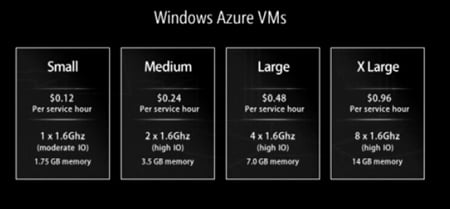This article is more than 1 year old
Microsoft delivers 'almost ready' Azure cloud
Play now, play later - much later
PDC Microsoft is fiddling around with the launch dates of the highly anticipated Windows Azure while showing off the cloud service's latest advances.
The company said on Tuesday that Azure, unveiled in October 2008, would continue as a Community Technology Preview (CTP) through to the end of this year.
Azure will be opened to paying customers on January 1, but you won't actually be charged for using Azure until a month later, as Microsoft tries to get its provisioning and billing systems up and running.
Microsoft chief software architect Ray Ozzie told Microsoft's Professional Developers' Conference (PDC) in Los Angeles, California that the company will test the systems that allocate compute resources and charge customers for "accuracy and completeness."
Also, it sounds like the full complement of data centers actually running Azure won't be fully in place until the turn of the year.
Data centers in Europe and Asia - Dublin, Amsterdam, Hong Kong and Singapore - follow those in Chicago and San Antonio. All three zones will go live in January, Ozzie told PDC.
So is Azure late?
Chief executive officer Steve Ballmer said in February Microsoft would "have the ability to go to market" by the end of year at PDC. "[Azure] will reach fruition with the PDC this year," he said.
From that perspective, you could argue Microsoft has hit Ballmer's stated goal.
However, Microsoft will still be refining the very systems that allocate computing and storage resources and that then charge people for them one month after the "official" launch and up to three months after Microsoft had the "ability" to go to market.
There is a precedent. This was kind of soft and hard launch dates Microsoft used on Windows Vista, with the staggered November "business" launch and January consumer release.
It fell to the white-haired chief software wizard to spin the Azure features developers can use now. New features that Ozzie said go live Tuesday at PDC are single sign-in for Windows Azure and SQL Azure storage.
Ozzie noted Azure also now offers multiple sized virtual machines with the ability to support any Windows code or programming model.
Windows Azure will come in four sizes of virtual machine, starting at $0.12 per service hour and with 1.75Gb of memory. The Azure virtual machines are priced the same as Amazon's own Windows service, but Microsoft has squeezed in an additional virtual machine SKU - called medium and charged at $0.24 per service hour and with 3.5Gb of memory.
But Amazon's Linux service still undercuts Azure.

Microsoft's Azure virtual-machine prices
Microsoft has also packed a lot of development into a short time. It's built the computing fabric, a programming architecture and ability to program not just using all Microsoft's programming languages and Visual Studio but also PHP, Java, and Ruby with a Fast CGI bridge and SDKs.
Also, the storage mechanism underwent a massive change, as Microsoft decided to give developers the familiarly of SQL Server, only in the cloud. Ozzie noted Tuesday Azure now offers features for updating and accessing data such as entity group transactions and block blobs.
Another feature coming next year is Windows Server AppFabric, a set of application services for building and deploying Windows Communication Foundation and Windows Workflow services on servers and in the cloud. Released as a beta Tuesday, AppFabric combines hosting and caching from the previous Dublin and Velocity projects with the Azure AppFabric Service Bus and AppFabric Access Control layer that was previously called .NET Services.
Server and tools president Bob Muglia said AppFabric would let you create an easy to mange infrastructure with Microsoft taking care of things like fail over and load balancing.
He also promised a set of predefined Windows server images would be loaded on Azure, which you could download, mount, take a virtual machine snap shot, and save for future use. Muglia said this would make it simpler to deploy applications you've built to Windows Azure.
Also, in Visual Studio 2010, will be Azure templates that Ozzie said would let you move cloud applications backwards and forwards between your systems and the cloud. ®
